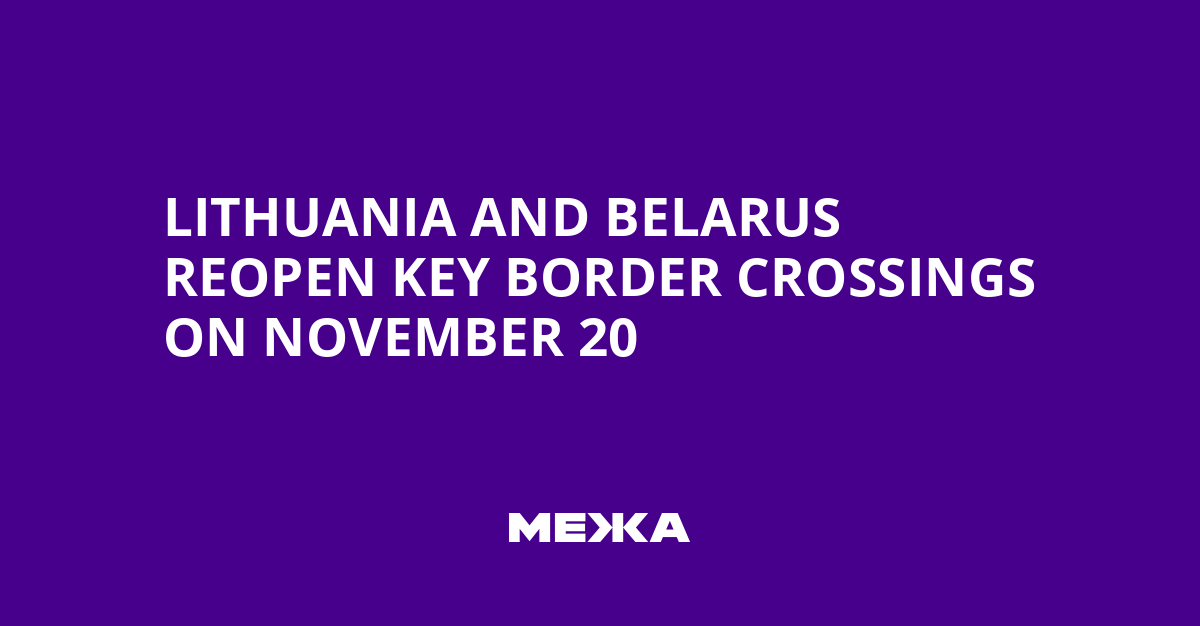The border authorities of Belarus and Lithuania reported that the Medniki (Kam’yany Log) and Solechniki (Benyakoni) border crossings resumed operations on November 20 at the border of the two countries.
According to the website of the Belarusian Border Committee, there are no queues for departures from Belarus to the European Union for passenger cars and buses at any checkpoint.
As the Belarusian Service of Radio Free Europe reported in the morning, 570 trucks were awaiting departure to Lithuania at Kam’yany Log, 355 at Benyakoni, and 1,055 at Kozlovichy on the border with Poland.
According to Lithuanian border guards, 34 trucks are awaiting shipment to Belarus at Medniki, and 25 at Solechniki.
Context and dynamics of interstate borders
Lithuania closed its border with Belarus on October 27 and initially said it planned to keep it closed at least until the start of December. The ban was introduced in response to dozens of meteorological balloons carrying contraband cigarettes that were flown from Belarus: at times their number exceeded several dozens at once. Because of the meteorological balloons, Lithuania was forced to close Vilnius Airport several times (it is located about 25 kilometers from the border with Belarus).
In response, on October 31, Lukashenko signed a decree prohibiting movement within Belarus of freight vehicles, tractors and trailers registered in Poland and Lithuania, as well as passenger cars registered in Poland. All these trucks (more than a thousand) were from that moment simply not allowed to leave the country and were sent under guard to parking areas near the border.
Minsk demanded that Lithuania fully open the border – experts linked this demand to the fact that the Belarusian authorities derive income from international transit shipments.
On November 19, the Lithuanian authorities decided that two border checkpoints on the Lithuania-Belarus border would reopen on November 20. At the same time they added that in case of escalation of the situation the border could be closed again.
Prime Minister Inga Rugienė explained the government’s decision as follows:
“Recently we have observed a very significant reduction in the volume of air-smuggling, which has led to a decrease in risk and threat to national security, civil aviation, and our society.”
– Inga Ruginene
Minister of the Interior of Lithuania Vladislav Kondratovich also stated at a government meeting that the previously imposed restrictions on crossing the state border are no longer necessary. Earlier in an interview with Radio Free Europe, he said that closed border crossings were also used for cigarette smuggling into Lithuania, and Lithuanian criminologists had begun investigating the matter.
After Poland opened two border crossings with Belarus on November 17, technical talks took place between Lithuanian and Belarusian border guards regarding the return to Lithuania of more than 1,000 trucks blocked in Belarus, as well as issues of cigarette smuggling and migrants. The head of Lithuania’s State Border Guard Service Rustamas Lyubaevas said after the talks that Belarus had expressed willingness to cooperate at the meeting.
